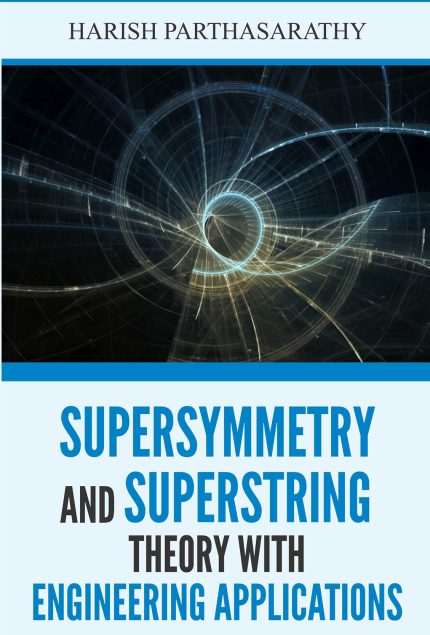The Theory of Relativity of Motion
₹595.00
Richard Chace Tolman | Category: Physics
Binding Type: Paperback Binding
Book Details
ISBN: 9789386677167
YOP: 2018
Pages: 275
Order also on
This book presents an introduction to Einstein’s Theory of Relativity, which has become a necessary part of the theoretical equipment of every physicist. Even if we regard the Einstein theory of relativity merely as a convenient tool for the prediction of electromagnetic and optical phenomena, its importance to the physicist is very great, not only because its introduction greatly simplifies the deduction of many theorems which were already familiar in the older theories based on a stationary either, but also because it leads simply and directly to correct conclusions in the case of such experiments as those of Michelson and Morley, Trouton and Noble, and Kaufman and Bucherer, which can be made to agree with the idea of a stationary either only by the introduction of complicated and ad hoc
assumptions.
Chapter I- Historical Development of Ideas as to the Nature of Space and Time
Part I- The Space and Time of Galileo and Newton
Part II- The Space and Time of the Ether Theory
Part III- Rise of the Einstein Theory of Relativity
Chapter II- The Two Postulates of the Einstein Theory of Relativity
Chapter III- Some Elementary Deductions
Chapter IV- The Einstein Transformation Equations for Space and Time
Chapter V- Kinematical Applications
Chapter VI- The Dynamics of a Particle
Chapter VII- The Dynamics of a System of Particles
Chapter VIII- The Chaotic Motion of a System of Particles
Chapter IX- The Principle of Relativity and the Principle of Least Action
Chapter X- The Dynamics of Elastic Bodies
Part I- Stress and Strain
Part II- Introduction of the Principle of Least Action
Part III- Some Mathematical Relations
Part IV- Applications of the Results
Chapter XI- The Dynamics of a Thermodynamic System
Chapter XII- Electromagnetic Theory
Chapter XIII- Four-Dimensional Analysis
Part I- Vector Analysis of the Non-Euclidean Four-Dimensional Manifold
Part II- Applications of the Four-Dimensional Analysis
This book presents an introduction to Einstein’s Theory of Relativity, which has become a necessary part of the theoretical equipment of every physicist. Even if we regard the Einstein theory of relativity merely as a convenient tool for the prediction of electromagnetic and optical phenomena, its importance to the physicist is very great, not only because its introduction greatly simplifies the deduction of many theorems which were already familiar in the older theories based on a stationary either, but also because it leads simply and directly to correct conclusions in the case of such experiments as those of Michelson and Morley, Trouton and Noble, and Kaufman and Bucherer, which can be made to agree with the idea of a stationary either only by the introduction of complicated and ad hoc
assumptions.
Chapter I- Historical Development of Ideas as to the Nature of Space and Time
Part I- The Space and Time of Galileo and Newton
Part II- The Space and Time of the Ether Theory
Part III- Rise of the Einstein Theory of Relativity
Chapter II- The Two Postulates of the Einstein Theory of Relativity
Chapter III- Some Elementary Deductions
Chapter IV- The Einstein Transformation Equations for Space and Time
Chapter V- Kinematical Applications
Chapter VI- The Dynamics of a Particle
Chapter VII- The Dynamics of a System of Particles
Chapter VIII- The Chaotic Motion of a System of Particles
Chapter IX- The Principle of Relativity and the Principle of Least Action
Chapter X- The Dynamics of Elastic Bodies
Part I- Stress and Strain
Part II- Introduction of the Principle of Least Action
Part III- Some Mathematical Relations
Part IV- Applications of the Results
Chapter XI- The Dynamics of a Thermodynamic System
Chapter XII- Electromagnetic Theory
Chapter XIII- Four-Dimensional Analysis
Part I- Vector Analysis of the Non-Euclidean Four-Dimensional Manifold
Part II- Applications of the Four-Dimensional Analysis
| Weight | 0.341 kg |
|---|---|
| Dimensions | 21.8 × 14 × 1.4 cm |
| yop |
2018 |
| subject-category |
Physics |
| isbn |
9789386677167 |
Related products











